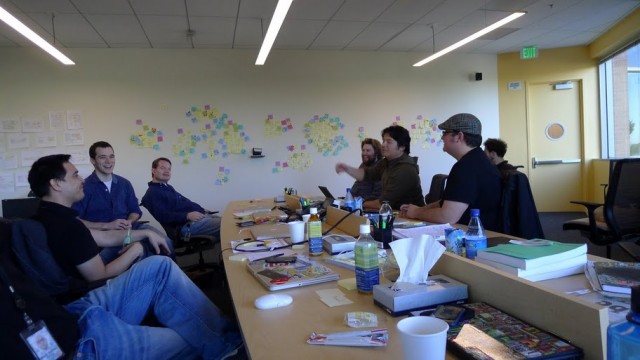If you want to learn lessons about how to run a great business, you should look no further than the most successful and respected businesses of our era—and few businesses have grown as big or have maintained their reputation as well as Google. When you boil down the factors for why Google has become such a dominant force in the tech world, you can cite a number of possibilities, from the way it treats its workers to its drive for constant reinvention—but when it comes down to its product popularity, it’s all about user experience.
The Need for User Experience

The Google team working on web fonts
A solid user experience strategy will help you design a website (or app, or product) that gives your users the easiest, most intuitive, most dynamic experience possible—making them want to come back for more and tell their friends about your brand. But the term “user experience” is generic, as are recommendations to have a “good” UX design.
Instead of relying on ambiguities, look to Google for these specific lessons about user experience in the modern era:
The minimum viable product. One of the biggest reasons Google beat the early search engine competition was because its homepage was so utterly basic—and still is! Google has tons of products, apps, and features, but when you access Google, you’re only immediately met with the same simple search bar they launched with in the late 1990s. Why is this important? Because oftentimes, it’s better to offer fewer options for users. There’s an illusion that more choices, or more features, are always better, when in reality, offering one good feature leads to a better overall experience. If you’re trying to stuff too much into a website, you’ll end up turning people off or confusing them—instead, focus on what you do best and emphasize it.
Usability. Usability is a broad category, but let me explain what I mean here. When a user wants to perform a Google search, he pulls up the app, enters in text, and reliably gets a few million results. This always happens. Every time. When was the last time Google was “down” and inaccessible to users? When was the last time it took more than a second to load the homepage? When was the last time you saw results for something other than what you searched for? The answer is never. That’s because Google doesn’t reveal something new to the public unless they’ve already worked all the kinks out of it—it’s why the company is still thoroughly testing its self-driving cars, despite early indication that they’re effective and safe. The company knows that “good enough” isn’t good enough—you have to make sure every user has a consistent and valuable experience, every time, no matter what. If that means sacrificing some bells and whistles, so be it.
Safety and security. Google is also a forerunner in the safety and security side of application design. It offers dozens of different settings and options for individual accounts to control what types of data are revealed, and how secure those accounts actually are in a broader context. Offering security makes users feel comfortable, and entails a degree of corporate responsibility, so show off your commitment to customer privacy and safety in your overall design. Make sure your users are aware of what you’re doing, and if necessary, walk them through the steps of setting up their security and privacy options.
Revision and growth. Google never stands still for long. It’s always cooking up a new app, a new improvement, or a new feature—partially because it encourages the creativity and ingenuity of its workers. But what’s important here from a UX perspective is that Google understands the significance of changing user trends and technologies, and updates its own technologies accordingly. Businesses that remain stagnant for too long can easily be outperformed by the competition, or abandoned by users who want something more. Your brand and products should always be in a state of constant and gradual evolution.
In the words of Marieke McCloskey of UserTesting, “UX design is a commitment to building products with the customer in mind.” It’s a simple explanation, but one of the most appropriate. Google demonstrates this in its approach to designing products and software for its massive and ever-growing customer base. Even if your business isn’t a tech giant, you can use these principles to guide your design and maximize your customers’ loyalty.
